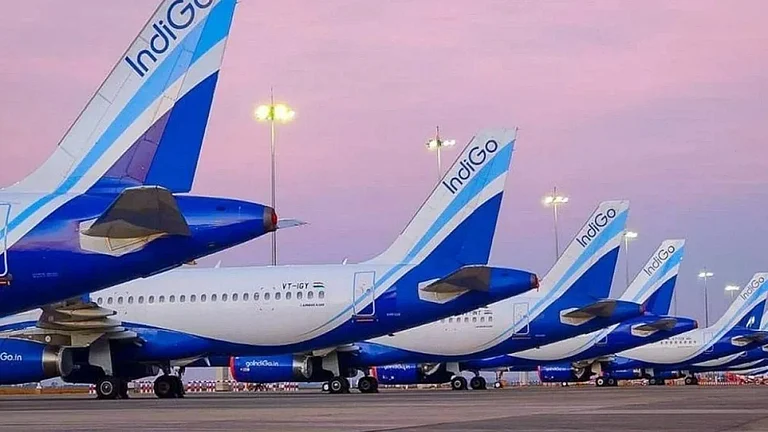Abhishek (name changed), founder of a drone start-up, knew the moment wasn’t about business. It was about the nation.
On the evening of May 8, the government reached out with an urgent order. “We need 100 drones in a few hours,” the caller said. The ask wasn’t random. In response to a terrorist attack on tourists in Pahalgam, India had launched Operation Sindoor.
The country was on edge. In moments like these, time is the real weapon. And Abhishek didn’t hesitate.
“We got the call in the evening, and by 11 am the next morning, we were ready to dispatch,” he says with quiet pride. “The whole team worked through the night. No second thoughts. We were built for this.”
Abhishek and his team could take the tough call for one simple reason—they had control of their supply chain. “Eighty per cent of our drone components are sourced locally. That enabled us to move fast. The remaining 20%—like image sensors—are prefabricated and stocked. You can’t build those overnight, but you can plan for them.”
Drones played a critical role in Operation Sindoor. On the night of May 7–8, Pakistan attempted to strike multiple targets across Northern and Western India using drones and missiles.
All the attacks were stopped by India’s air defence systems and platforms designed to neutralise drones. According to PIB, Indian-made technology like long-range drones and accurate targeting systems helped make this operation successful.
India’s drone industry has come a long way. Start-ups like Alpha Design Technologies, Paras Defence & Space Technologies, and IG Drones are now players to reckon with. Funding has soared from just $3–4 million in 2015–16 to $112 million in 2022, dipping slightly to $108.2 million in 2024, according to Tracxn.
Yet, Abhishek’s company is the exception, not the rule. Most drone start-ups in India still rely on foreign components — especially from China.
The China Problem
China began investing in drones in the early 2000s and now dominates the global market. Its factories produce motors, sensors, and imaging systems at scale and low cost. DJI, the world’s top drone maker, alone commands 70–80% of the global consumer market.
India started early, developing unmanned aerial vehicles (UAVs) for military surveillance and operations. However, it entered the civilian drone sector in a meaningful way only after 2021 when the government removed several licensing requirements and launched the Digital Sky platform — an online portal designed to streamline drone operations. By then, China had already secured its position as the global hub for civil drone production.
Up until 2018, civil drone operations in India were mostly unregulated and technically barred. The DGCA’s Drone 1.0 policy in August 2018 was the first attempt to formalise rules for civilian drone use.
Still, India relies heavily on imports from China for crucial industrial inputs, many of which are essential for drone manufacturing. Data from the Global Trade Research Initiative (GTRI) shows that India’s imports from China increased from $76.4 billion in 2018 to $101.8 billion in FY2024, with 98.5% of these comprising industrial products, which contribute key components to the drone supply chain.
To taper this reliance, the Directorate General of Foreign Trade (DGFT) issued a notification in February 2022, restricting the import of fully built, semi-assembled, or completely knocked-down drones without its approval. However, imports of drone components from China continue unabated. Between March 2022 and February 2023, India imported motors, sensors, batteries, and cameras worth $50-70 million, a 53% growth over the previous year.
“We are essentially putting the systems together here. The core technologies, the “super tech”, still come from abroad,” says Lt Col JS Sodhi (Retd), Author of China's War Clouds.
The Great Chinese Checkmate
India’s dependence on foreign countries is fraught with risks. Take cybersecurity, for starters, where such dependence can have serious security consequences. Though a single part—like a camera—may not pose a threat, the real risk lies in how the drone transmits data. Most rely on common radio frequencies like 2.4 or 5.8 GHz, the same bands used by Wi-Fi and Bluetooth. These are easy to jam, hack, or spoof. Countries with advanced cyber capabilities, like China, can embed hidden software—Trojans—and take control of drones from afar.
Peeyush Kumar, CEO of drone tech company Pixella, says, “If someone embeds a Trojan or hidden virus in a drone, they could control it remotely from China, Taiwan, or even the US. In critical situations, such drones might act unpredictably or stop supporting India altogether.”
Besides, geopolitical tensions are a constant risk. For instance, in July 2023, China placed curbs on the export of long-range drones and important drone parts like flight controllers to stop them from being used in the Russia-Ukraine war or other conflicts. The US, too, has similar restrictions in place to ensure that drone parts made in America aren’t used for military purposes without special approval.
So, which are the most imported drone components?
Let’s break it down.
Beating at the heart of every drone is a lightweight, silent, and efficient motor that gives it lift and control. Most of these are still imported, primarily from China and Taiwan.
“Among these, propulsion systems (motors, ESCs, power electronics) account for nearly 40% of the drone’s cost and are critical to performance,” says Prudhvi Raj Pakalapati, co-founder of drone start-up Vector Technics.
Then there’s the brain: the flight controller. Some start-ups assemble these in India, but the core parts — silicon chips, ASICs, PCBs — still come from China or Taiwan, as do batteries.
Since Drones use fewer lithium-polymer (Li-Po) cells than EVs, they remain unattractive to domestic battery makers, leaving domestic drone makers with no option but to import.
The camera — or payload — which accounts for 60–70% of a drone’s cost, is almost entirely imported as India doesn’t yet produce drone-grade sensors at scale. “It’s a huge constraint,” says Prof. Satya Chakravarthy of IIT Madras, founder of the ePlane Company. “Maybe one or two companies make cameras for ISRO. But nothing commercial. China, Japan, Korea — they’ve all cracked it. We haven’t.”
What’s Holding India Back?
India continues to rely on imported parts because of a melange of challenges, including limited R&D investment, the absence of large-scale domestic manufacturing, regulatory hurdles, and more.
For decades, the country’s total R&D spending as a percentage of GDP has stagnated at around 0.64% of GDP, far behind China and the US, which spend 2.4% and 3.5% respectively, of their much larger GDPs. Israel allocates 5.7% of its GDP to R&D. This persistent shortfall severely hampers innovation in critical sectors such as electronics and sensors, compounding another major weakness: According to a report by the Department of Science and Technology, only 2.1% of the Indian workforce has a Ph.D., which is much lower than the global average of 7.2%.
Meanwhile, demand continues to be a structural challenge. “If there’s no demand, why would people put money into building something?” says Anil Joshi, Managing Partner, Unicorn India Ventures
The demand tends to be seasonal, particularly in the civil drone segment, where sales are closely tied to agricultural cycles, infrastructure projects, and government tenders — all of which tend to be irregular. For instance, demand for agri-drones spikes during post-harvest periods when farmers or agri-businesses invest in spraying or monitoring equipment. Similarly, infrastructure-related demand increases at the end of fiscal years or during periods of increased government spending.
In contrast, the defence sector offers more predictable, long-term demand due to structured procurement cycles and sustained budgets. However, defence deals are fewer in number and highly competitive, meaning not every company can depend on them.
In 2021, the Indian government tried to promote the domestic industry by banning the import of fully assembled drones while still allowing the import of components. This move encouraged local assembly and gave rise to full-stack start-ups like IdeaForge and NewSpace, which build complete drones for specific use cases. However, even these companies lean on imports for batteries, motors, and sensors as local manufacturing remains scattered and small-scale.
That’s a concern for investors like Joshi. He’s wary of start-ups that make parts but have not developed anything unique or critical — like a drone battery that’s lighter and more powerful than what’s currently available. In his view, these component-only start-ups are too dependent on bigger drone makers (OEMs) and will find it hard to scale unless they come up with solutions for high-value problems. Most of the strong pitches he sees today either come from companies building entire drones or those offering essential tech like navigation or safety systems.
Another challenge for India’s domestic drone manufacturers is the booming grey market for drone components. In cities like Chennai (Ellis Road) and Delhi (Chandni Chowk), these parts are sold openly, without GST invoices or after-sales support – and, because of that, at much lower prices. This imbalance puts start-ups at a clear disadvantage. While they are weighed down by a 28% GST burden, grey market sellers operate tax-free. Prof. Chakravarthy of IIT Madras estimates that by 2018, India already had over five lakh illegal drones—a figure that has only grown since. “Most wedding drones are unregistered, unsafe, and flown by uncertified operators,” he warns, citing the complete lack of enforcement around safety standards.
India’s Push for Homegrown Drones
However, despite these headwinds, at least some companies have managed to achieve significant levels of indigenisation. Take, for instance, Optiemus Unmanned Systems, which says it makes 75% of the components in-house and wants to push this further. Says its Executive Chairman, Ashok Kumar Gupta: “We have already managed to manufacture several key drone parts locally — including the anti-spark switch, power distribution board, speed controller, flight controller, and GPS unit. Our next goal is to become totally self-reliant.”
Building a drone ecosystem from scratch requires more than just ambition. It requires time, discipline, and a collaborative mindset. Sambit Prasad Parida of IG Drones, which was associated with Operation Sindoor, says, “We didn’t build a factory overnight. We stitched together a supply chain.” While 80% of its parts are made in-house, high-value components like camera payloads are still mostly imported.
As the demand evolves, it remains to be seen how India can truly build its drone ecosystem from the ground up — with components made at home.































